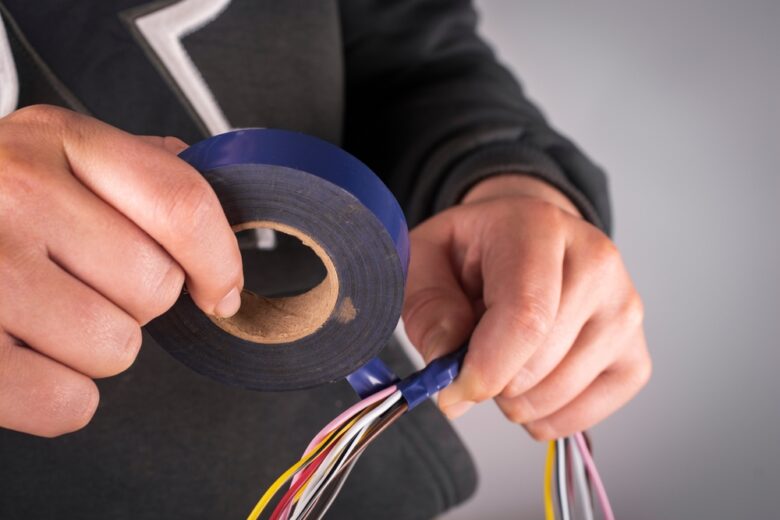Thermal insulation tape is a seemingly simple material with a wide array of uses across various industries. These uses range from providing insulation in homes to serving as a humidity barrier in industrial settings. With myriad types and brands littering the market, making a choice can be a daunting task.
This guide exists to escort you on the journey from clueless to confident, helping you make informed decisions that guarantee satisfaction and value for money in your choice of thermal insulation tape.
This article delves into the ins and outs of thermal insulation tapes. It explores the definitions, the history, the science behind these insulating marvels, and even the common mistakes to avoid when purchasing and using them. Stick with us as we unravel the mysteries of thermal insulation tape and show you how to make the right choice.
What Is Thermal Insulation Tape?
Thermal insulation tape, in its essential form, is a type of adhesive tape used to provide insulation against heat and electricity. This tape comes in various types, each designed to meet the wide array of needs across different industries.
The history of thermal insulation tape dates back nearly a century, with innovators constantly working to provide more efficient, durable, and functional options to meet the rising demand.
Thermal insulation isn’t just for engineers in high-stakes industrial applications. This essential product forms the backbone of numerous DIY projects and offers energy-saving benefits in our homes. Whether you are looking to cut down on your energy bills or improve thermal management in your office, thermal insulation tape is a fantastic way to go.
The Different Types of Thermal Insulation Tapes
There are several types of thermal insulation tapes, and understanding their unique features can help you make an informed choice. From foil tapes to foam tapes, each type has unique benefits that make them suitable for various uses.
Foil tapes, for example, are great for sealing ductwork and HVAC systems, thanks to their excellent heat conduction and durability. On the other hand, foam tapes excel at sound absorption and are great at providing water and air seals in doors and windows.
In the electronics industry, polyester tapes are often the go-to option as they provide excellent electrical insulation while still being able to withstand higher temperatures. Knowledge of these distinctive characteristics is the first step to making the right choice of thermal insulation tape.
The Science Behind Thermal Insulation Tape
Understanding the science behind thermal insulation can help you appreciate its importance and inform your choice. In a nutshell, thermal insulation works by reducing the amount of heat that can be transferred between objects in thermal contact or in the range of thermal radiations.
This simple fact is what makes insulation tape so crucial in numerous applications. Factors such as the quality of the tape material, the thickness of the tape, and the adhesive used all contribute to the effectiveness and efficiency of the thermal insulation provided.
When wisely chosen and properly used, thermal insulation tape helps improve energy efficiency and cuts down costs in homes, offices, and industrial applications.
How to Choose the Right Thermal Insulation Tape
When it comes to choosing the right thermal insulation tape, several factors must be taken into account, including:
– The specific application you need the tape for
– The temperature range the tape will be exposed to
– Whether the tape will be exposed to moisture or direct sunlight
– The longevity and durability you need from the tape
Comparison of the various brands available based on these factors can help you make the right choice for your needs. Keep these considerations in mind when purchasing thermal insulation tape, and you’re sure to make an informed choice.
Common Mistakes When Using Thermal Insulation Tape
Despite its numerous benefits and usefulness, there are certain common mistakes that people make when buying and using thermal insulation tape. These mistakes often result in reduced efficiency, poor outcome, and potentially higher costs.
Some of the common mistakes include buying the wrong type of tape for a specific need, incorrectly applying the tape, or failing to adequately prepare the surface where the tape will be applied. Avoiding these pitfalls can help extend the life of the tape and improve its efficiency.
7 DIY Projects to Tackle With Thermal Insulation Tape
Thermal insulation tape is not just for industrial applications; there are numerous DIY projects you can tackle using this versatile material. From creating a thermal barrier for your greenhouse to improving the sound insulation in your home studio, the possibilities are endless.
With a little creative spirit and a roll of thermal insulation tape, you can enhance your living conditions and even save a little money in the process.
Conclusion
From its inception almost a century ago, thermal insulation tape has gone through numerous innovations to become a vital tool in many applications. Whether it’s in your home, office, or for a DIY project, the right thermal insulation tape can bring numerous benefits, such as cutting down on energy costs and improving insulation in various areas.
With the knowledge shared in this guide, we hope you are now better equipped to make confident and informed decisions when choosing the right thermal insulation tape.

Leave a Reply